How to Fix Windows Update 0x80070012 on Windows 10
Some Windows users are reporting that whenever they attempt to open the Windows Update screen they end up seeing the 0X80070012 error code after the scan for newly available updates fails. This issue is only reported to occur on Windows 10.
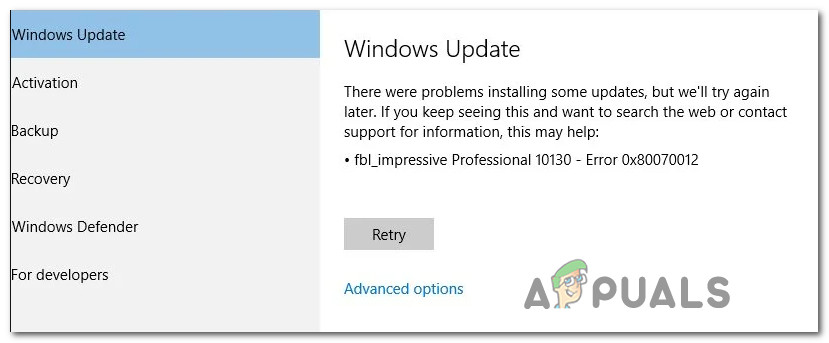
As it turns out, there are several underlying causes that might be triggering this particular error code. Here’s a list of potential culprits that might be triggering the Windows Update error 0X80070012:
- Common Windows Update issue – The ideal way to start troubleshooting this particular issue is to run the Windows Update Troubleshooter. If the problem is already covered by a repair strategy, the utility will be able to resolve the issue automatically.
- WU service/s stuck in a limbo state – If the problem originates from an issue having to do with the state of several critical WU services that are neither opened or closed. In order to resolve this issue, you’ll need to reset every Windows component either via the automated agent or with a series of manual commands inside an elevated Command prompt.
- System file corruption – Another fairly common scenario that will cause this issue is some kind of system file corruption that is affecting the WU component. Several users facing the same problem have managed to fix the issue by deploying SFC and DISM scans. in more serious circumstances, you might need to go for a repair install.
Now that you are aware of every potential culprit that might be triggering this error code, here’s a couple of verified methods that other affected users have successfully used to resolve the 0X80070012 error code:
Method 1: Running the Windows Update Troubleshooter
Before you go into more advanced repair strategies capable of resolving the 0X80070012, you should start by verifying if your OS installation is capable of resolving the issue automatically.
Keep in mind that Windows 10 includes a lot of built-in repair strategies capable of resolving the majority of failures to install a pending Windows 10 update.
Several users that we’re facing this exact issue have managed to resolve the problem and install the pending update by running the Windows Update troubleshooter and applying the recommended fix.
Note: The Windows Update Troubleshooter contains dozens of repair strategies that will be applied automatically if some type of inconsistency is found. If the scan finds a viable repair strategy, the utility will automatically recommend a viable fix that you can apply with a simple click.
Follow the instructions below to deploy the Windows Update troubleshooter to resolve the 0X80070012 error code on Windows 10:
- Open up a Run dialog box by pressing Windows key + R. Inside the text box, type “ms-settings-troubleshoot” and press Enter to open up the Troubleshooting tab of the Settings app.
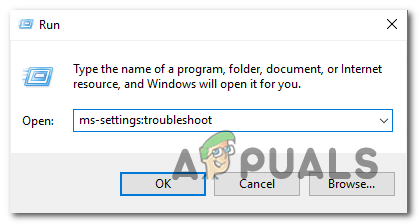
Opening the Troubleshoot screen - Inside the Troubleshooting tab, go to the right section of the Settings screen then move down to the Get up and running section and click on Windows Update.
- From the context menu of Windows Update, then click on Run the troubleshooter from the newly appeared context menu.
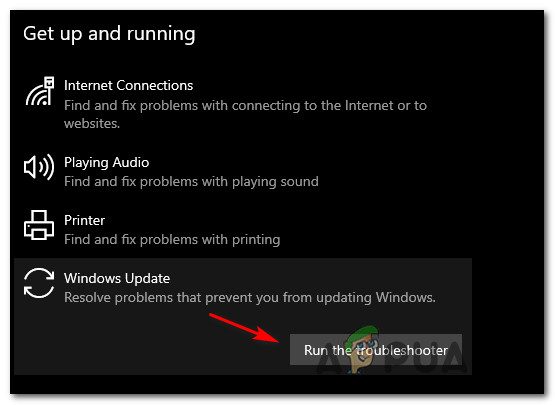
Running the Windows Update troubleshooter - As soon as you start this utility, it will automatically begin to scan your system of any inconsistencies. Wait patiently until the initial scan is complete.
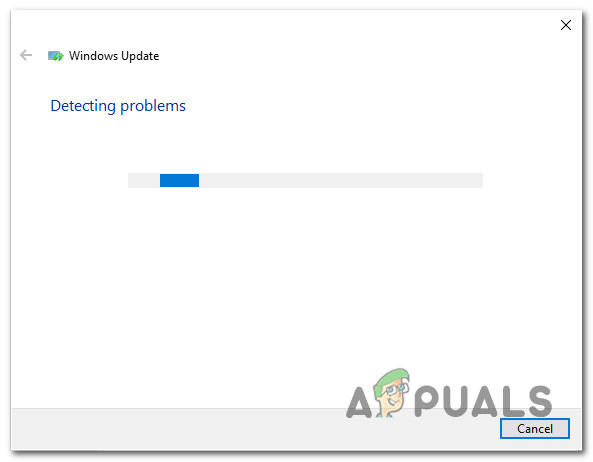
Detecting problems with Windows Update Note: This scan will determine whether any of the repair strategies included with it are a match for the updating problem you’re currently dealing with.
- Once a viable repair strategy is found, you will be presented with a new window in which you can click on Apply this fix to apply the recommended fix.
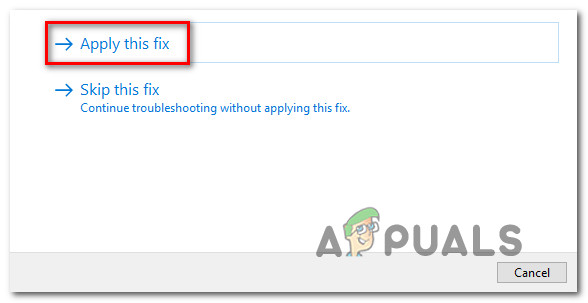
Applying the recommended fix Note: Depending on the fix that the troubleshooter recommends, you might need to follow a series of additional instructions to enforce the recommended fix.
- After the recommended fix is successfully applied, restart your computer and see if the issue is resolved once the next startup is complete.
If the 0X80070012 is still occurring when you attempt to install the pending update or the Windows Update troubleshooter didn’t find a viable repair strategy, move down to the next potential fix below.
Method 2: Resetting every Windows Update Component
If the Windows Update troubleshooter was not able to resolve the 0X80070012 error, you’re likely dealing with a persisting bug that is affecting the Windows Update component.
In this case, you should go ahead and deploy the same repair strategies in order to reset every Windows Update component that might be causing issues with your pending Windows updates.
Note: The most common instance that will cause this kind of issue is one or more WU (Windows Update) components that are currently stuck in a limbo state (they’re neither open nor closed).
If this scenario is applicable, you will be able to fix the problem by resetting all WU components that are involved in the updating process.
Here are two different methods that you can follow in order to reset all Windows Update components:
A. Resetting WU via the WU Agent
- Open your default browser, visit the Microsoft Technet download page and download the Reset Windows Update Agent script.
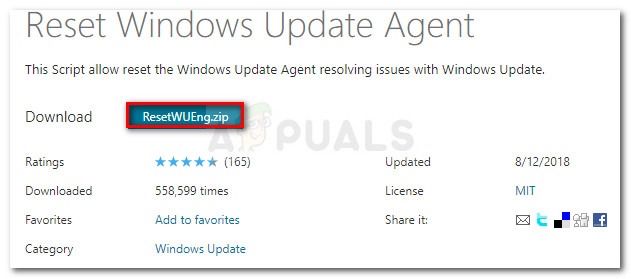
Downloading the Windows Update Reset agent - Once the download is complete, go ahead and extract the zip archive with a utility like WinRar, WinZip, or 7Zip and paste it into an easy to access location.
- Next, double-click on the ResetWUENG.exe file and click Yes at the User Account Control prompt.
- Then, follow the instructions to run the script on your computer. At the end of this operation, the utility will reset all your WU components.
- After the operation is complete, restart your computer and see if you’re able to install the failing update once the next startup sequence is complete.
B. Resetting WU via elevated CMD
- Start by pressing Windows key + R to open up a Run dialog box. Then, type “cmd” inside the text box and press Ctrl + Shift + Enter to open up an elevated Command Prompt.
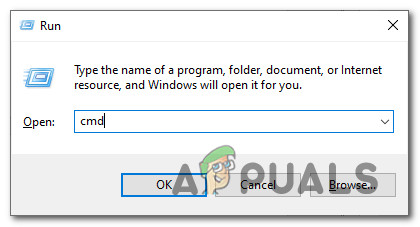
Opening a CMD prompt Note: At the UAC (User Account Control) prompt, click Yes to grant administrative privileges.
- Inside the elevated Command Prompt, type the following commands in order and press Enter after each command to stop all WU related services:
net stop wuauserv net stop cryptSvc net stop bits net stop msiserver
Note: These commands will stop the Windows Update Services, MSI Installer, Cryptographic services, and BITS services.
- Once every relevant service is stopped, run the following commands to clear and rename SoftwareDistribution and Catroot2 folders:
ren C:\Windows\SoftwareDistribution SoftwareDistribution.old ren C:\Windows\System32\catroot2 Catroot2.old
Note: Renaming these folders with the commands above will force your OS to create new healthy equivalents that will not be affected by corruption.
- Now that the folders have been cleared, run the following commands to re-enable the services that we’re previously disabled:
net start wuauserv net start cryptSvc net start bits net start msiserver
- Finally, restart your computer once again and see if the issue has been resolved at the next computer startup.
If the same 0X80070012 error is still occurring even after you have successfully refreshed every Windows Update component, move down to the next potential fix below.
Method 3: Running SFC and DISM scans
If refreshing every Windows Update component didn’t fix the issue, you should also consider that some kind of system file corruption is causing the 0X80070012 error when attempting to install a pending Windows Update.
If this scenario is applicable to your current situation, you should start by running a couple of scans with two built-in utilities – System File Checker (SFC) and Deployment Image Servicing and Management(DISM).
Note: SFC and DISM share some similarities, but our recommendation is to run both scans in quick succession in order to improve your chance of fixing the corrupted system files.
Start with a simple SFC scan.
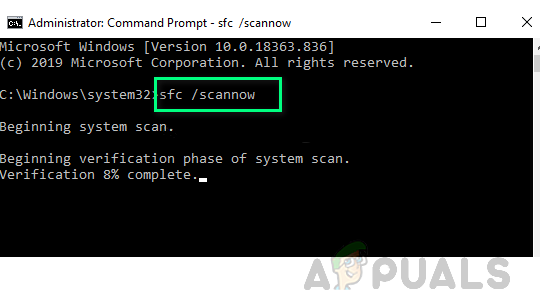
Note: This tool is entirely local and will not require you to be actively connected to the internet.
Important: Once you initiate this procedure, it’s very important to not close the CMD window even if the utility looks like it froze. Wait patiently until the process is complete (interrupting the operation might cause logical errors on your HDD/SSD)
Once the SFC scan is completed successfully, reboot your computer and see if the issue is fixed once the next computer startup is complete.
After you, deploy a DISM scan and follow the on-screen prompts to complete the operation.
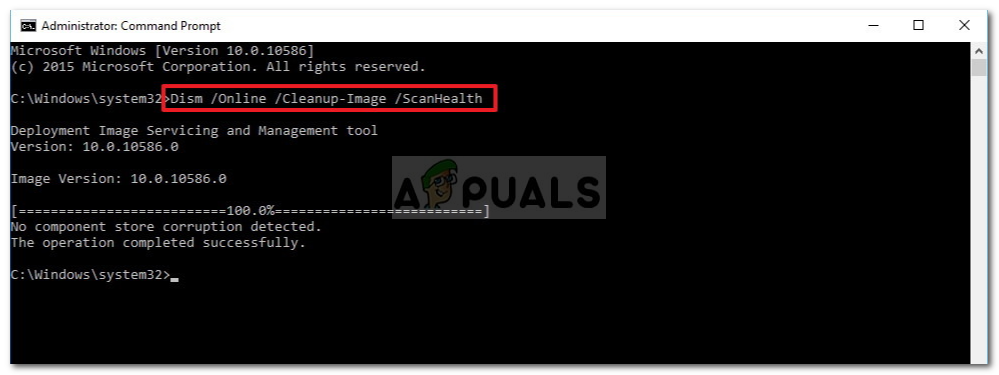
Note: DISM uses a sub-component of Windows Update to download healthy equivalents to replace corrupted system files. Due to this, you need to make sure that you have reliable Internet before initiating this operation.
Once the DISM scan has been completed successfully, restart your computer once again and see if the 0X80070012 error is now fixed.
In case you’re still dealing with the same issue, move down to the next potential fix below.
Method 4: Performing a Repair Install
In case none of the methods above have proven to be effective in your case, the last resort should be to take some steps to fix an underlying corruption issue.
In this case, you should be able to resolve the issue by performing a repair install. A few affected users have reported that this method ended up helping them install every pending update that was previously failing with the 0X80070012 error code.
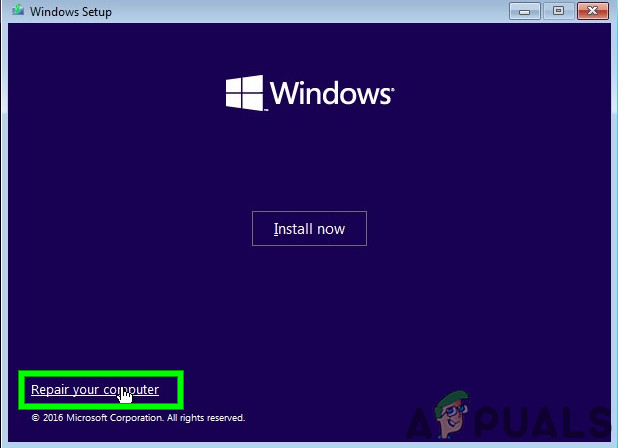
This procedure is superior to a clean install because it will only refresh Windows components and booting-related processes and allow you to keep all personal data including photos, applications, games, videos, and any other type of personal files.
Follow these step-by-step instructions on deploying a repair install procedure on your Windows installation.





